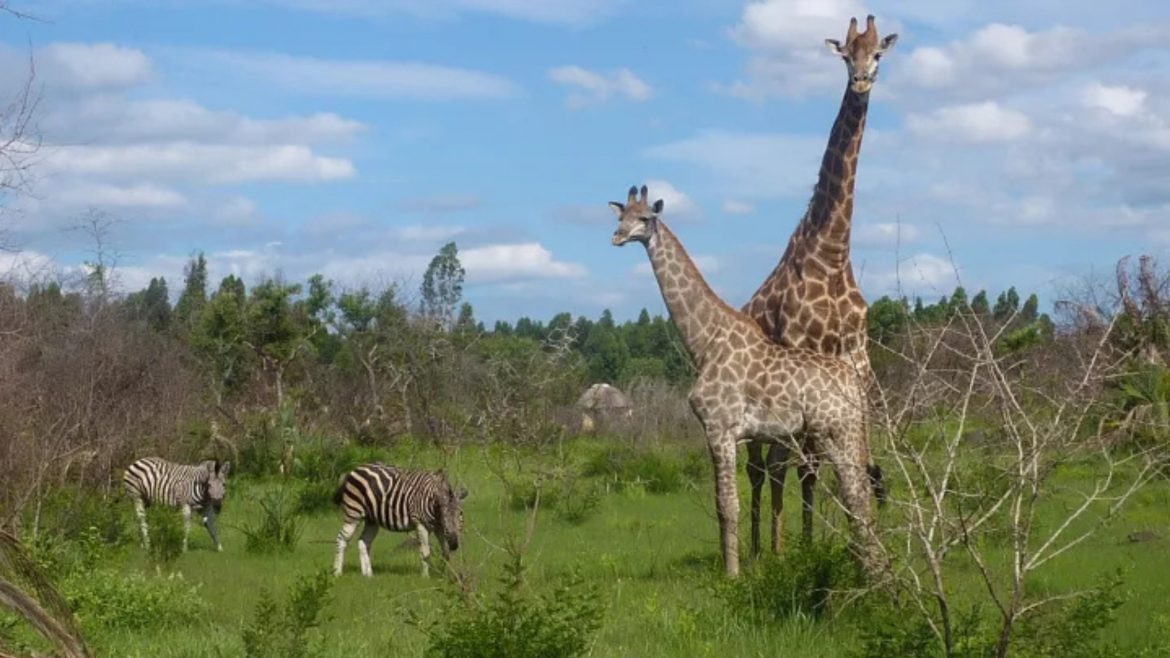There’s a special kind of thrill in steering your own course through the African wilderness, without a guide or convoy in sight. Self-drive safaris allow you to slow down, stay longer, and stumble upon unforgettable sightings at your own pace.
Here are eight lesser-known parks across Southern and East Africa where the self-drive safari spirit is still alive and untamed.
ALSO SEE: 10 tips to maintain your fitness routine while travelling
1. Gonarezhou National Park – Zimbabwe
Tucked into Zimbabwe’s remote southeast, Gonarezhou is as wild as it gets. The name means “Place of Elephants,” and it delivers—expect close encounters with giants against a backdrop of red sandstone cliffs and baobab-dotted plains. Wildlife is plentiful but elusive, rewarding patience and sharp eyes.
Drive Details:
A high-clearance 4×4 is non-negotiable, especially if you want to explore beyond the main routes. The park offers remote campsites and basic lodges with minimal infrastructure—perfect for off-grid adventurers.
2. Kgalagadi Transfrontier Park – South Africa/Botswana

Nossob Rest Camp @ Kgalagadi Transfrontier Park/Doretha Rost/Unsplash
This desert wonderland straddles South Africa and Botswana, with red dunes, dry riverbeds, and some of the best predator sightings on the continent. Think cheetahs on the hunt, raptors in flight, and iconic black-maned Kalahari lions.
Drive Details:
The South African side is surprisingly accessible with a sturdy SUV, though a 4×4 opens up more routes and wilderness camps. Unlike many desert parks, Kgalagadi has well-marked roads and great self-catering facilities.
3. Nkasa Rupara National Park – Namibia

Red lechwe male, Nkasa Rupara National Park/Charles J Sharp/Wikimedia Commons
Formerly Mamili, this park in the lush Zambezi Region feels a world away from Namibia’s dry interior. It’s a wetland paradise of reed beds, floodplains, and lagoons where elephants, hippos, and crocs rule. Birdwatchers will be in heaven.
Drive Details:
Only accessible by 4×4, especially in wetter months. Expect sandy tracks, river crossings, and real isolation—come prepared with supplies, navigation tools, and an adventurous spirit.
4. Nyika Plateau National Park – Malawi

Nyika National Park/Joachim Huber/Wikimedia Commons
Forget savannah—this is Malawi’s answer to the Scottish Highlands. Misty mornings, rolling green hills, and herds of zebra grazing alpine meadows create a surreal setting for a safari. Roan antelope, eland, and hyena roam the plateau, with very few visitors to compete with.
Drive Details:
Access requires a sturdy vehicle and good timing (roads can be tricky in the rainy season). There’s one central lodge and a few basic campsites—book ahead and fuel up in Rumphi.
5. Liuwa Plain National Park – Zambia

Liuwa Plain National Park/S1m0nB3rry/Wikimedia Commons
Remote, flat, and endless, Liuwa Plain hosts Africa’s second-largest wildebeest migration—and barely anyone knows about it. You’ll likely have sightings of hyena, jackal, and birdlife all to yourself, plus the feeling of being utterly alone in a vast wilderness.
Drive Details:
A serious 4×4 destination. You must bring everything: fuel, food, water, and camping gear. Permits are limited and must be arranged in advance. Only for experienced overlanders—but oh, is it worth it.
6. Marakele National Park – South Africa

The watering hole at the Bontle campsite in Marakele National Park/NJR ZA/Wikimedia Commons
Set in the Waterberg mountains, Marakele feels like a secret gem within driving distance of Joburg. Expect elephant, rhino, leopard, and superb birding. Plus, the dramatic topography means incredible views at every turn.
Drive Details:
You can explore most of the park in a 2WD, though a 4×4 lets you tackle the more remote eco trails. Great for families or self-drive newbies looking to get off the Kruger track without going full bush.
7. Hlane Royal National Park – Eswatini

Hlane Royal National Park/總統府/Wikimedia Commons
Eswatini’s largest park is small by African standards, but its game density surprises many. Lions, elephants, white rhinos, and plenty of antelope roam its bushveld, and it’s one of the only places in the region where you can self-drive near rhinos on a short schedule.
Drive Details:
Easily accessible by regular vehicle and close to the main roads. Stay in thatched huts or the basic but well-located campsite.
8. Maputo Special Reserve – Mozambique

Maputo Special Reserve/Bilenekitecenter/Wikimedia Commons
Elephants trudge through coastal forest. Flamingos skim freshwater lakes. And sandy tracks wind toward the Indian Ocean. Maputo Special Reserve has made a slow comeback thanks to conservation partnerships, and it’s now a rewarding self-drive destination with a wild edge.
Drive Details:
Enter from the south near Kosi Bay (border post: Ponta do Ouro). A 4×4 is essential, especially in the wet season. Camping and lodge options are available, but book ahead—this place is catching on.
Self-drive safari essentials
- Vehicle: High-clearance 4×4 for most parks; some are 2WD-friendly.
- Navigation: Offline GPS maps and a paper backup are must-haves.
- Supplies: Many parks have no fuel or food options inside—stock up before you enter.
- Permits: Book park access and accommodation in advance, especially in remote parks.
- Respect the Wild: Drive slowly, never exit your vehicle in unfenced areas, and leave no trace.
Drive your own adventure
Self-drive safaris aren’t just for seasoned overlanders. With the right research, even first-timers can chart their own course through some of Africa’s richest ecosystems—on their own terms. These lesser-known parks prove that the road less travelled often leads to the most unforgettable wild moments.
ALSO SEE:
Featured Image: Getaway
This article was written by


